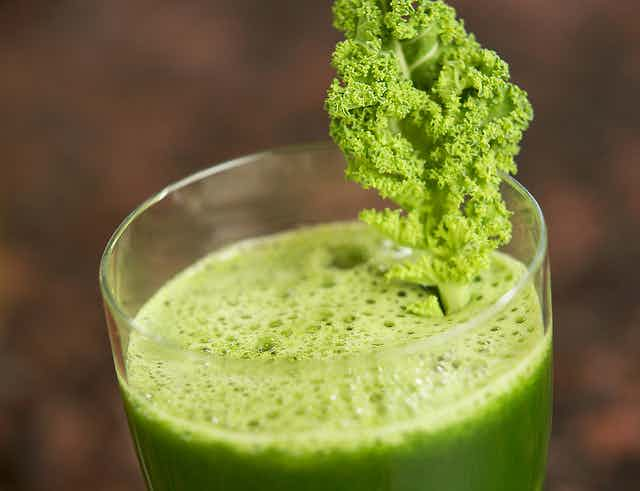Orthorexia nervosa, the “health food eating disorder”, gets its name from the Greek word ortho, meaning straight, proper or correct. This exaggerated focus on food can be seen today in some people who follow lifestyle movements such as “raw”, “clean” and “paleo”.
American doctor Steven Bratman coined the term “orthorexia nervosa” in 1997 some time after his experience in a commune in upstate New York. It was there he developed an unhealthy obsession with eating “proper” food:
All I could think about was food. But even when I became aware that my scrabbling in the dirt after raw vegetables and wild plants had become an obsession, I found it terribly difficult to free myself. I had been seduced by righteous eating.
Bratman’s description draws parallels with many modern dietary fads that promise superior health by restricting whole food groups without a medical reason or even a valid scientific explanation.
Raw food followers might meet regularly to “align their bodies, minds and souls” by feasting on “cleansing and immune-boosting” raw foods. Such foods are never heated above 44˚C, so “all the living enzymes in the food remain intact”. No gluten, dairy or “sugar” is allowed.
Clean eaters may follow similar regimes, removing gluten, dairy and even meat from their diets. You might overhear a discussion about “superfood green smoothie” recipes after a yoga class that also happened to “cleanse your gall bladder”.
And finally, around the corner, paleo pushers may “beef up” together with a Crossfit class, followed by a few steaks. Again, with paleo, there is no gluten – or any grains for that matter – and no dairy or other such “toxins” are allowed.
How common is orthorexia?
There is a blurry line separating “normal” healthy eating and orthorexia nervosa, but one way to define the condition is when eating “healthily” causes significant distress or negative consequences in a person’s life.
They may be “plunged into gloom” by eating a piece of bread, become anxious about when their next kale, chia or quinoa hit is coming, or eat only at home where “superfood” intake can be tightly controlled.
Such behaviours can have a significant impact on relationships with family members and friends, let alone on their mental health.

Orthorexia nervosa is not a clinically recognised eating disorder but researchers have developed and tested questionnaires in various populations to get an idea of its prevalence.
Italian researchers developed the ORTO-15 questionnaire in 2005, with a cut-off score below 40 to signify orthorexia nervosa. Scores above 40 can still signify a tendency to pathological eating behaviours and/or obsessive-phobic personality traits.
Questions include: “Does the thought about food worry you for more than three hours a day?” and “Do you feel guilty when transgressing your healthy eating rules?”
Using this questionnaire and cut-off value of 40, another Italian research group reported a prevalence of orthorexia nervosa of 57.6%, with a female-male ratio of two-to-one. However, using a cut-off value of 35, the prevalence reduced to 21%.
Most studies have been conducted in population sub-groups that may be at increased risk for orthorexia nervosa, such as health professionals. Again using the ORTO-15 and a cut-off value of 40, the prevalence of orthorexia nervosa in Turkish medical doctors was 45.5%, in Turkish performance artists it was 56.4% (81.8% in opera singers to 32.1% in ballet dancers) and in ashtanga yoga teachers in Spain, 86.0%.
Using another questionnaire, the Bratman Test, 12.8% of Austrian dietitians were classified as having orthorexia.
You can test your own tendencies towards orthorexia nervosa using this Bratman test here and access support services via the National Eating Disorder Collaboration page and Body Matters Australasia.
Is it a mental disorder?
Orthorexia nervosa is not listed in the American Psychiatric Association’s Diagnostic and Statistical Manual (DSM-5), which psychologists and psychiatrists use to diagnose mental disorders. The DSM-5 currently lists anorexia nervosa, bulimia nervosa, binge-eating disorder, “other specified feeding or eating disorder” and “unspecified feeding or eating disorder”.
Some clinicians argue orthorexia nervosa should be recognised as a separate eating disorder and have proposed clinical DSM diagnostic criteria. They note distinct pathological behaviours with orthorexia nervosa, including a motivation for feelings of perfection or purity rather than weight loss, as they see with anorexia and bulimia.

Others disagree and argue that it falls in current eating disorder or other mental disorder categories. As Bratman explained in 2010:
At times (but not at all times) orthorexia seems to have elements of OCD (obsessive compulsive disorder). It may also have elements of standard anorexia. But it is often not very much like typical OCD or typical anorexia.
It’s clear that more research is needed on orthorexia nervosa, including its diagnosis and potential DSM listing as an independent eating disorder.
It’s also important to consider that people can move between mental disorder classifications. Sometimes labels may not be as important as providing solutions to patients with disordered eating, such as cognitive-behavioural therapy.
Striking a balance
As a nutritionist and a recovered sufferer of bulimia, I leave you with some advice:
Don’t trust all-devoted kale consumers, including health professionals and celebrities, if their advice isn’t based on scientific evidence.
Don’t make food the most important focus of your life. As Bratman says:
Rather than eat my sprouts (or kale) alone, it would be better for me to share a pizza with some friends.
Try to be a balanced food consumer with a “mostly and sometimes” mantra.
Rebecca will be on hand for an Author Q&A session between 2 and 3pm AEDT on Friday March 27. Post your questions about the article in the comments section below.

